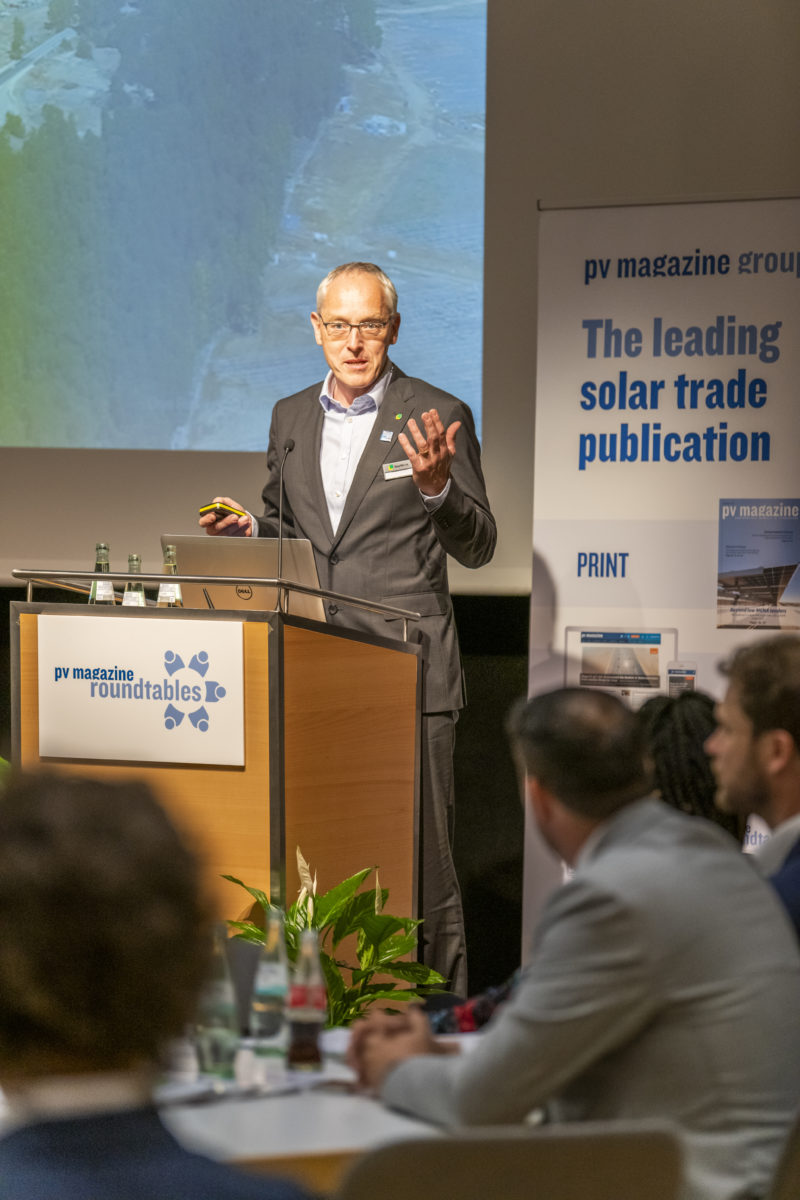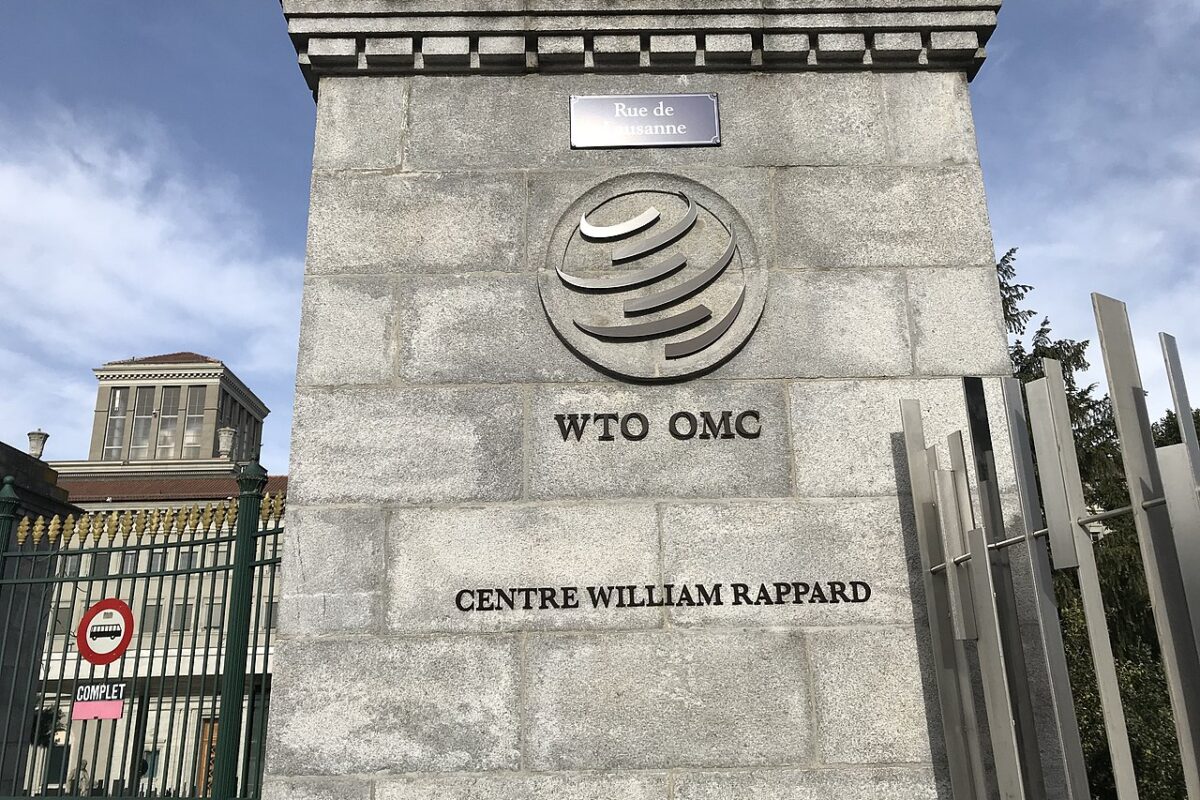“This is actually a disruptive moment for the branch,” exclaimed Benedikt Ortmann during his presentation at the Future PV Roundtable at Intersolar 2019. “It is only a matter of time for us to push the costs further down, then we can go into areas where the irradiation is less and we can see grid parity very soon in other parts of the continent.” Ortmann is the CEO of global project developer Baywa r.e. Solar Solutions, and he had taken roundtable attendees through the particulars of the company’s 175 MW Don Rodrigo project, completed in December 2018. The project has been sold to MEAG, the asset manager of insurers Munich Re and ERGO.
Ortmann’s presentation, and the company’s achievement with Don Rodrigo, was warmly received by roundtable attendees, who were impressed with the company’s vision for large-scale PV projects developed without subsidies, and for the cost structures achieved. “Frankly if Baywa can deliver €0.45/Wp turnkey solar projects this year, that’s pretty impressive,” said panelist Jenny Chase. “We haven’t seen solar projects that cheap, except maybe in India, and there I have the strong suspicion they are not going to work.”
Baywa r.e. was clear in its aim to construct utility-scale PV projects that can be financed, executed and operated beyond the realm of politics — free from potential disruptions caused by rapid policy shifts. And it was a long-term vision. Baywa r.e. actually began the initial work on project development back in 2012, when the Spanish PV market was well-and-truly in the doldrums. “It was actually just a bet,” Ortmann candidly noted.
On costs, Ortmann set out how module prices have accounted for roughly 50% of project costs between 2012 and 2018 — even as system prices have declined €2.13/Wp to €0.53/Wp over the same period. Given this, looking toward the “disruptive moment” when large-scale solar grid parity extends right across Europe, module prices will have to continue to decline, and reach around $0.20/Wp by 2020, which is in line with Baywa’s current forecasts.
Module tech’s contribution
“I think Benedikt would like to have 20-cent modules because his company buys modules,” said Chase. “Of course, he wants cheap modules, because it saves him work.” Next to Chase on the Future PV panel, following the Baywa presentation, were representatives from module makers and material suppliers.
“Twenty U.S. cents by 2020 — it’s tough from a module manufacturer point of view,” noted Radu Roman, Product and Business Development Manager for JinkoSolar. “Obviously, we are not at the point today where multi matches the mono PERC price. On mono PERC I don’t think it’s realistic to expect such a dramatic price drop, at least not before 2020.”
First Solar’s Stefan Degener, the company’s Managing Director for Europe, would not be drawn into a cost/watt discussion. He instead focused on the ways module makers can contribute to reducing system and installation costs, particularly in light of the company’s new Series 6 modules.
“We have invested a lot of time to design a system for our module that brings down the system cost, but most importantly the installation costs,” said Degener. “If you’re talking about markets like Europe, the U.S. or Australia, then we are talking about environments with high labor costs. That is our contribution to the developers’ effort to build competitive power plants.”
Long-lived assets
The business case for the Don Rodrigo project was demonstrated through a chart displaying the project’s LCOE development over a 30-year period. With an asset depreciation period of 15 years, it is after the fifteenth year that the project’s annual cost of electricity (ACOE) “falls off a cliff,” in Ortmann’s words, with operating costs of less than €8/MWh.
For material suppliers, the longevity of assets is a key concern. “Typically, you get what you pay for,” said Paolo Tusa, Commercial Manager for DSM Advanced Solar. “Whether the panels degrade faster or at a lower pace will dramatically change your business model.” He also sought to highlight kWh production over kWp costs, a point with which First Solar’s Degener strongly concurred.
Dutch startup Coolback Company chose Intersolar Europe to launch its new backsheet design — and a module deploying Coolback was on display at the roundtable. Coolback replaces conventional backsheets and the module frame with an aluminum structure designed not only to reduce the operating temperature of the module, but also enhance longevity through bolstered rigidity and the benefits of cooler PV cells.
“If you are more on the sporty side, and you want to say that the lifetime of the generator will be more like 30 or 40 years, this number [solar plant LCOE] goes significantly further down, you will end up below even €20/MWh,” said Ortmann. “PV is the cheapest energy source, nowadays.” For home and business owners, this has major implications also, and the second part of the roundtable tackled this very theme. More on that in the August edition of pv magazine.
|
Capex |
€/kWh |
Opex |
€/kWp p.a. |
|
|
PV generator |
567 |
Rent |
1.46 |
|
|
Grid connection costs |
32 |
Technical management |
6.71 |
|
|
Project development costs |
50 |
Business administration |
5.02 |
|
|
Other costs (ie. Construction finance) |
108 |
Insurance |
0.74 |
|
|
Total capex grid connected |
758 |
Other expenses |
3.36 |
|
|
Due diligence, bank and share premium |
52 |
Total expenses |
17.29 |
|
|
Total investment |
810 |
|
Solar yield: 1,730 kWh/kWhp |
Land lease: €961/hectare |
System. Fixed tilt mono PERC 310Wp, monofacial, string inverters 100 kW |
Investor IRR 6.0% |
This content is protected by copyright and may not be reused. If you want to cooperate with us and would like to reuse some of our content, please contact: editors@pv-magazine.com.




Sure, as solar matures it should not NEED subsidies to survive. So why are both coal and oil, as well as primitive nuclear, subsidized as much as possible? Why do we fight wars for oil companies amd pay for the fuel to do that fighting? Why don’t they pay for the environmental costs? Health damage? Toxic wastes lleft everywhere?